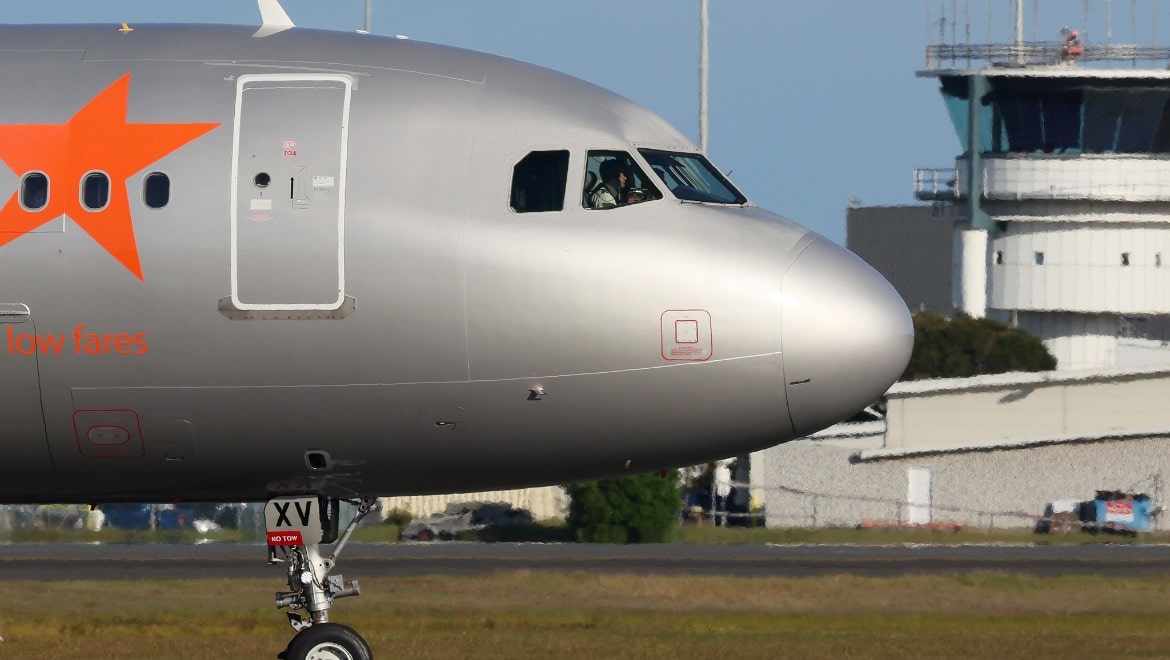
Discount domestic airfares in Australia hit a near-15-year price high in September as airlines balanced surging demand with high fuel prices and inflation.
According to new BITRE data released by the Department of Transport, the ‘best discount’ airfare index hit 107 points last month, despite being at just 48 in April this year. The news likely indicates that airlines are releasing fewer cheap tickets, with demand strong enough that they don’t feel the need to incentivise prospective customers with cut-price offers.
Regular airfares also hit 83 points, its highest since March 2020 and the start of the pandemic.
The huge prices are a result of a perfect storm for the industry, which is still battling staff shortages and instability caused by the war in Ukraine.
In total, jet fuel prices have risen by more than 40 per cent in the APAC region in the last year alone, according to IATA, and by 85 per cent in North America.
The steadily increasing prices led to both Qantas and Rex announcing earlier this year that both airlines would be forced to up fares to cope.
In March, Qantas CEO Alan Joyce said the airline had hedged around 90 per cent of the fuel it needed through to the end of June, and 50 per cent of its requirements for the September quarter and said the airline would ultimately need to increase airfares to account for its increasing costs.
“[Hedging] gives us time to react to that higher fuel price,” he said. “Unfortunately, if we stay at these levels, airfares are going to have to go up, we’re going to have to pass them on.”
The ACCC then revealed last month how domestic airlines were significantly reducing capacity to mitigate the delays and cancellations caused by staff shortages and sickness, while also saving on fuel.
The competition watchdog revealed the cut in seats for sale during the last few months came despite the local industry hitting 97 per cent of pre-pandemic passenger numbers in June.
The ACCC also said the combination of high demand and reduced capacity meant the industry-wide load factor, or the proportion of seats that are filled, increased to 82 per cent in July 2022.
“This compared with 79 per cent pre-pandemic. Several routes to northern Australia had more than 90% of seats filled, including routes to Cairns, the Gold Coast and Darwin.”
Yet despite aviation’s huge problems – including breaking all-time records for delays in April, June, and July – the local industry has bounced back to roughly 90 per cent of its pre-pandemic performance.
It led to Qantas last week revealing it was on course for a remarkable post-pandemic recovery and is now targeting an underlying profit before tax of up to $1.3 billion in the first half of the current financial year.
The result comes despite the wider group recording an underlying loss before tax of $1.86 billion in its last full-year results and claiming the pandemic cost its airlines $7 billion in total.
Qantas believes its revenue for leisure travel is at more than 130 per cent of pre-pandemic levels.
“The broader operating environment remains complex with high fuel prices and high inflation, as well as higher interest rates impacting on consumer confidence,” said the company in a market update on Thursday.
“However, robust demand indicates that people are prioritising spending on travel above other categories, which supports the Group’s ability to fully recover higher fuel costs through fares.
“Fuel prices are now around 75 per cent higher than pre-COVID, compared with around 60 per cent in August 2022.
“Group International capacity is now expected to increase from 61 per cent of pre-COVID levels in the first half of FY23 to 77 per cent in the second half.”
The new BITRE data is a price index weighted over selected routes. It does not measure real airline yields or average fares paid by passengers.
The index has been compiled using flight booking data since 1992, with data from June 2003 representing the base index value of 100.0.















